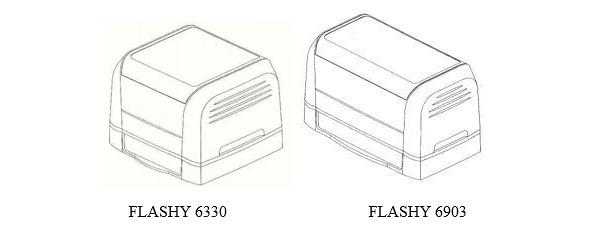Summary: What is the standard that decides whether a design is novel or not? The Delhi High Court clarifies that instructed eye or informed user test remains the primary standard in Indian design law.
The Delhi High Court has reaffirmed the applicability of the "instructed eye" test as the principal standard for determining design infringement, and that it is valid to break down the design into smaller elements for comparison when the novelty statement of the design registration resides in its "configuration." The decision came on 20 May 2025 in Trodat GmbH & Anr. vs. Addprint India Enterprises Pvt Ltd. & Anr. (FAO(OS) (COMM) 93/2025, CM APPL. 31020/2025 & CM APPL. 31021/2025).
Background of the Dispute
Trodat GmbH and its subsidiary, Trodat Marking India Pvt. Ltd. ("Trodat"), filed an infringement suit against Addprint India Enterprises Pvt. Ltd. ("Addprint"), alleging that Addprint's 'KVIK' rubber stamp product was a blatant and fraudulent imitation of Trodat's registered designs (Nos. 272348 and 272349) for their "FLASHY 6330" and "FLASHY 6903" self-inking stamp products.

In October 2022, an interim injunction was granted in favour of Trodat, restraining Addprint from manufacturing or selling the 'KVIK' product due to its striking resemblance to Trodat's designs. Following the huge business losses incurred from the injunction, Addprint came up with an alternative design, and presented it to Trodat during mediation proceedings between the two. However, Trodat contended that it was not sufficiently distinct.
Following further refinements in its product, Addprint sought clarification from the High Court seeking clarification for launching an alternative non-infringing product. In other words, Addprint wanted the High Court to confirm that it did not fall under an existing interim injunction. The Single Judge ruled in Addprint's favour, finding no infringement of Trodat's registered designs, and allowed it to manufacture and sell the new self-inking stamp design.
Single Judge's Reasoning
The Single Judge employed the "instructed eye" test citing Diageo Brands B.V. v. Alcobrew Distilleries India Pvt. Ltd. (2022 SCC OnLine Del 4499), which assesses infringement through the lens of an informed user familiar with similar products, as opposed to the perspective of an average consumer. The Single Judge compared detailed features of the designs, including variations in top, side, and bottom views.
Based on these specific differences, the Single Judge concluded that Addprint's proposed alternate product looked "visually different" and had a "dissimilar visual effect," thus not infringing Trodat's registered designs.
The Appeal
Trodat appealed this decision, with a Division Bench of the Delhi High Court issuing the decision presently under discussion.
Trodat argued that dissecting a design into its individual features was improper. For this, it relied on a landmark decision of the Calcutta High Court on design infringement tests, in Castrol India Ltd v Tide Water Oil Co. (I) Ltd. (1994 SCC OnLine Cal 303). The Division Bench, however, upheld the Single Judge's decision. It clarified that the design as a whole must be compared, but it also said that, in cases where the statement of novelty is based on "configuration," an assessment of the individual configuration elements is justified and legally permissible. It observed that "configuration", although not defined in the Designs Act, is understood as the arrangement of a design's components.
Accordingly, the Division Bench confirmed that when a design registration's novelty resides in its configuration, it is lawful and appropriate to compare each element of the allegedly infringing design with the registered design.
The Way Forward
This judgment reinforces the use of the "instructed eye" or "informed user" test as the leading standard in Indian design law.
While it is a welcome clarification that a detailed, element-wise comparison is appropriate when the protection claimed in the design registration centers on configuration rather than just the overall visual impression, this approach applies even in cases where the novelty statement does not explicitly recite a specific "configuration." The "informed user" test inherently presupposes that the user is familiar with each design feature and comprehends how the claimed design distinguishes itself from prior art.
The content of this article is intended to provide a general guide to the subject matter. Specialist advice should be sought about your specific circumstances.


